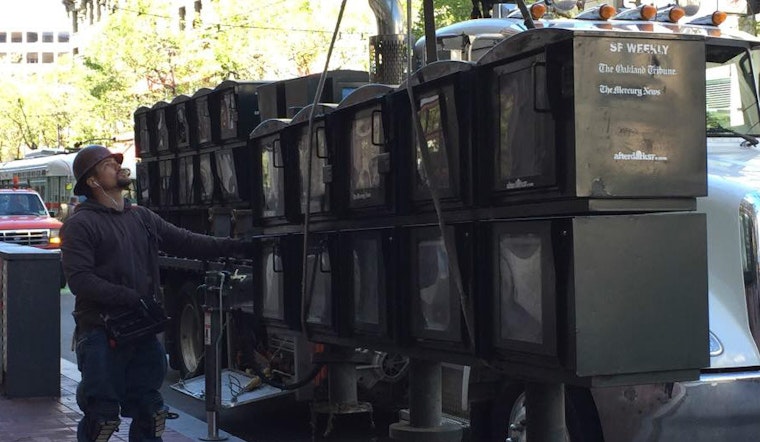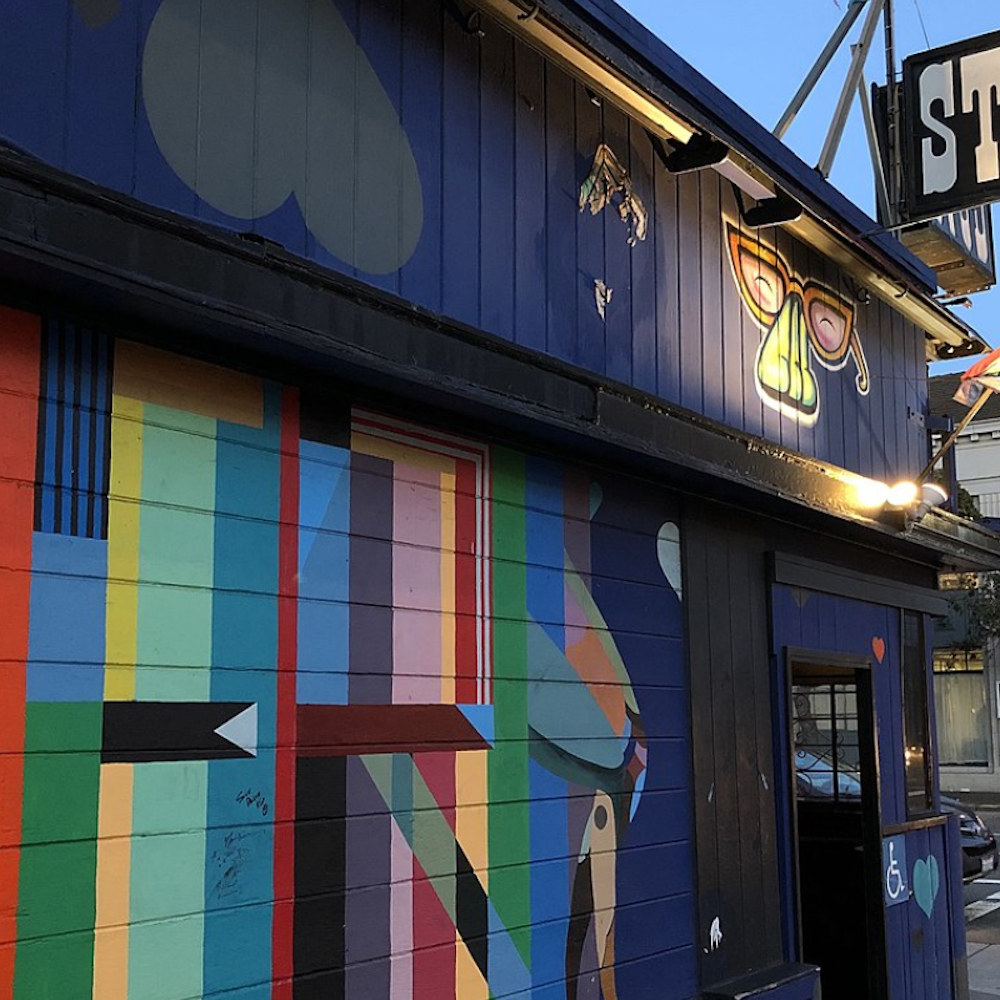
We're seeing fewer of those dark green multiple-dispenser news racks in the city: SF Public Works and Clear Channel Communication are removing 60 pedestals and also replacing 23 of the larger ones with smaller versions containing fewer compartments.
We started looking into this thanks to Jessica Christian of the Examiner, who took a picture of one of the fixed pedestal news racks being removed from Market and Stockton. She was told they were being cleaned, but we've noticed many of the boxes are scarcely used. They hold a variety of publications, including newspapers, real estate guides, educational course catalogs and maps.
 Photo: Geri Koeppel/Hoodline
Photo: Geri Koeppel/Hoodline
SF Public Works oversees the program for these specific news racks, which are called "pedmounts." Its website says Pedmount News Rack Zones were established in 2002 throughout downtown San Francisco, SoMa and North Beach, and in 2009, pedmount zones were established throughout the city on residential commercial corridors—everywhere from the Castro to Haight Street to Polk Street. (SF Public Works provided us a list of all of the locations.)
So we asked what's happening, and Public Works spokesperson Rachel Gordon sent an email saying, "In regards to the news rack pedestals removed from Market Street, Public Works and Clear Channel are working on a citywide news rack pedestal consolidation project. The intention of this project is to remove and reduce vacant pedestal boxes to reduce sidewalk clutter and improve the appearance of San Francisco streetscapes. The project has an estimated completion date of 5/28/16."
The email explained that this includes permanently removing 60 pedestals and replacing 23 large (10-unit or eight-unit) pedestals with smaller, six-unit pedestals. We asked why the boxes don't get more use, and Gordon referred us to Clear Channel. It sent a statement from Jason D. King, spokesperson for Clear Channel Outdoor, reading, "Working with the DPW, we are consolidating and enhancing the appearance of the city's news racks while maintaining the first amendment rights of our marketing partners."

A six-unit pedestal on Drumm Street. (Photo: Geri Koeppel/Hoodline)
We asked Clear Channel if it was doing anything to market these news racks more aggressively, but didn't get a reply to that. The company landed a 20-year contract in 2002 to install, operate and maintain up to 1,000 units on public property. Gordon told us that in October of 2015, Public Works calculated that there were roughly 786 news rack pedestals installed in the city. Of those, 54 percent have six separate boxes, 20 percent have eight boxes and 26 percent have 10 boxes.
Gordon emphasized that the information she gave us only pertains to news rack pedestals. "Public Works does not maintain records regarding free standing news racks," she wrote.

Free-standing news boxes. (Photo: Geri Koeppel/Hoodline)
The goal of the News Rack Program is to reduce the clutter associated with the free-standing racks. The website reads, "Fixed pedestal news racks promote the public health, safety and welfare and the aesthetic qualities of the City by controlling the placement, size, construction and appearance of news racks."
Publishers must apply for a box space in pedmount units. "The city conducts an allocation and lottery meeting whereby publishers obtain approval and pay a permit fee of $50 per year for each approved box space," according to the website. "Once a pedmount unit is installed, publishers are notified to occupy the news boxes and to remove all free standing news racks. Free standing racks are not allowed to coexist on sidewalks with fixed pedestal racks."
We asked Gordon if the city keeps statistics on how many publishers apply for space and whether the numbers are declining. She replied via email, "We don’t maintain specific records of the number of requests that come in year to year. Anecdotally, I would think that there would be fewer requests as print publications dwindle and more newspapers are focused on digital publication."









